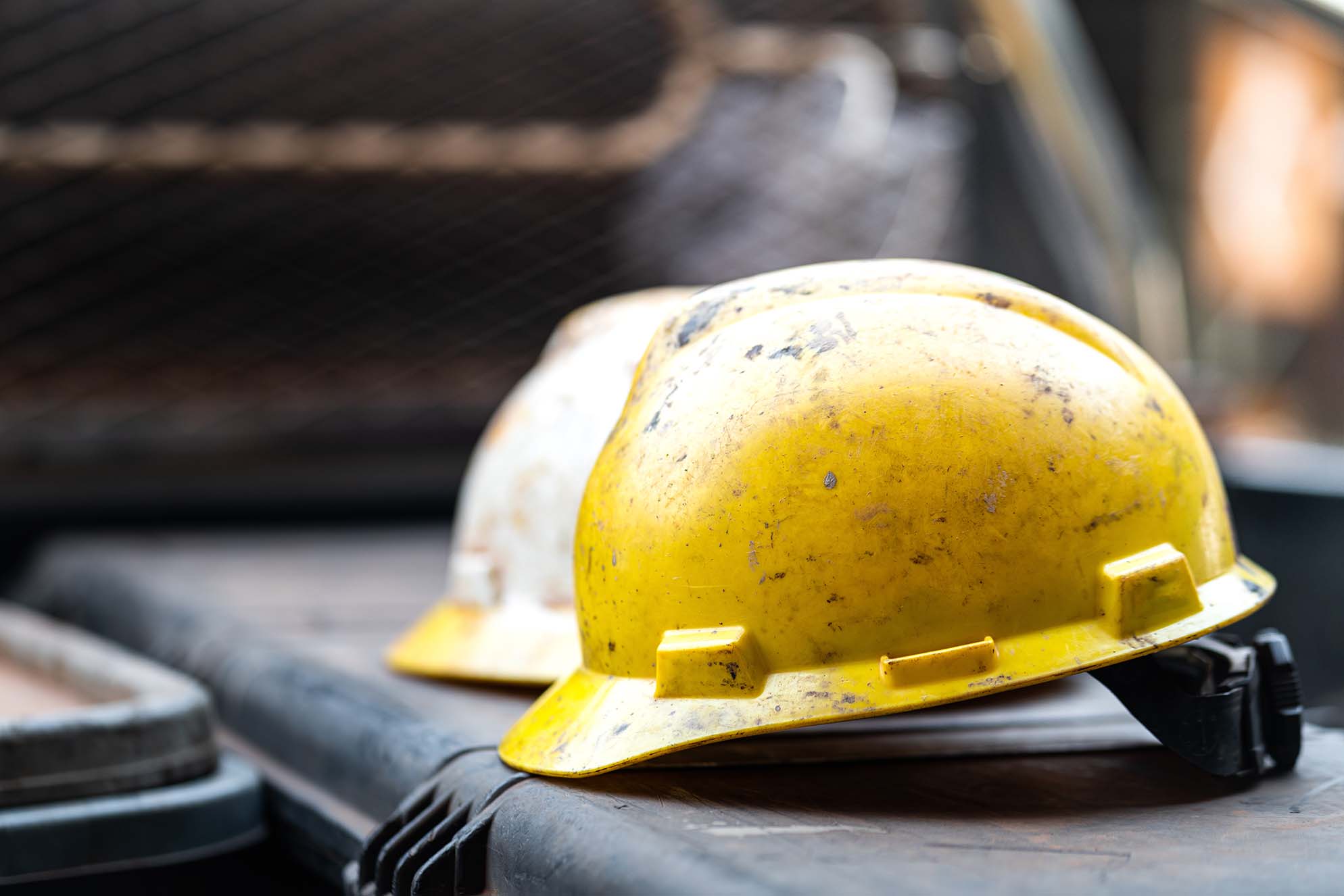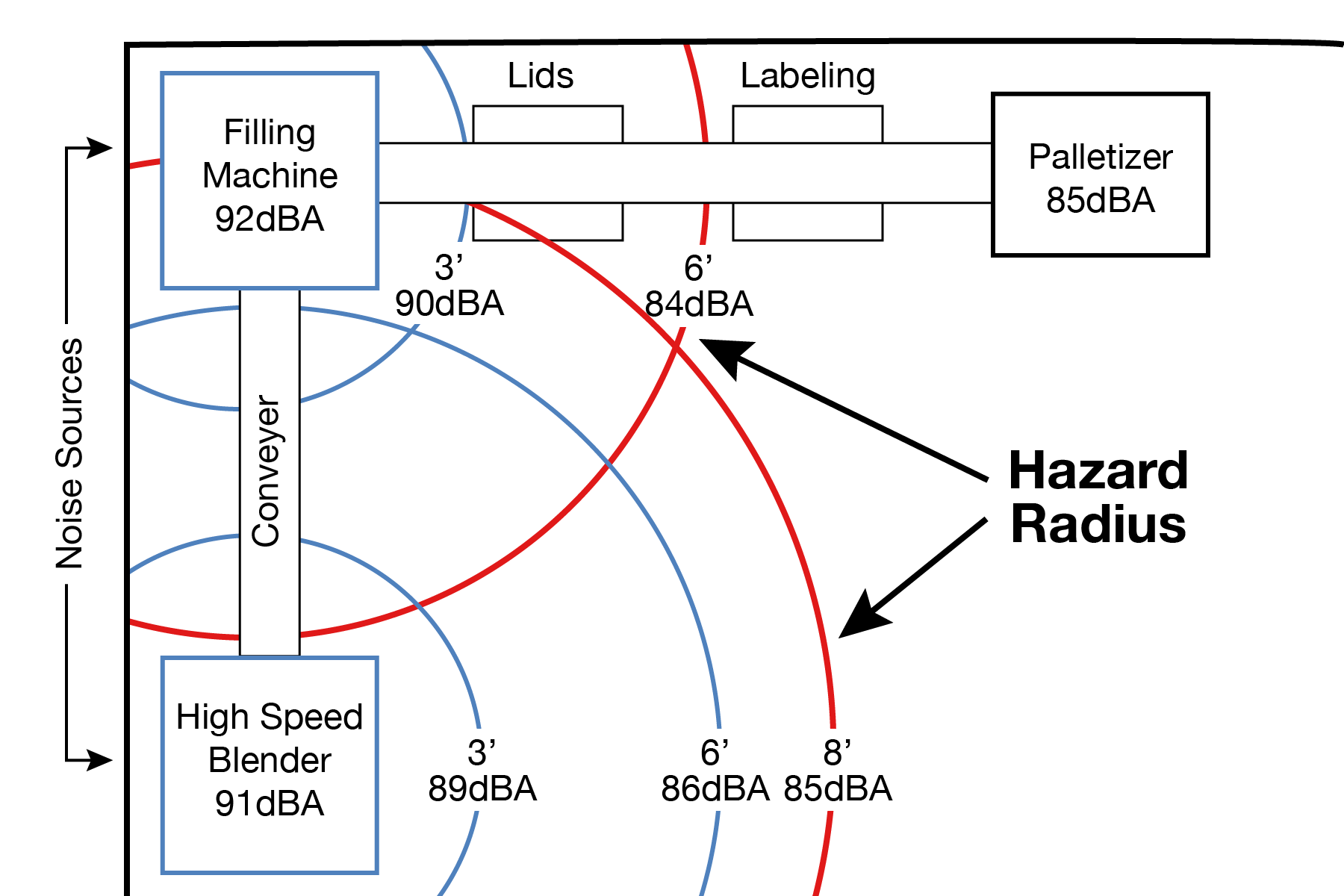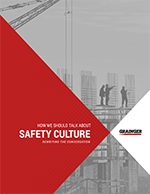

Hazard Recognition and Control Strategies
By Grainger Editorial Staff 7/1/19


Whenever there's an accident, there's always a "why" and a "how" that can explain what happened. Each accident has its own "why" and "how" related to the specific details of that particular event, but there's a big picture, too—a "why" and "how" that are common to all accidents. And it's helpful to consider this big picture as part of any effort to improve workplace safety.
Why? Accidents happen when the hazards of a job are not properly managed, either because they are not fully understood, or because they are not perceived as risks before the work starts.
How? When one event, like a simple mistake or chance occurrence, leads to a chain of other related events that are unchecked—or inadequately checked—by barriers or safety controls, an accident is the result.
Think about why accidents occur, and remember the importance of fully understanding the hazards and risks associated with a job. Think abouthowaccidents occur, and remember the importance of installing barriers and controls that can break the chain that leads from a small mistake or unexpected occurrence to a serious accident.
With these considerations in mind, you can design effective strategies to identify and control hazards in your workplace.
Hazard Identification and Control Strategies Are Critical
It's tempting to believe that common sense alone can prevent most accidents—to believe that all it takes is for workers to pay attention to their tasks and their surroundings and act appropriately to avoid any hazards that arise. But this is not the case: hazards are impossible to avoid if you don't know they exist, and they can be hard to spot because they come in all shapes and sizes.
Most workplace hazards are more complex than they may first appear. They rarely have a single, simple cause. More often, there are many factors that contribute to their creation. These factors can include many different types of things, like equipment, materials, practices, processes or substances.
The Occupational Safety and Health Administration (OSHA) has guidelines that show just how many different kinds of hazards there are. OSHA divides them into safety hazards, biological hazards, physical hazards, ergonomic hazards, and chemical hazards. As these categories show, hazards can be as different from each other as slippery floors, contagious viruses and loud noises.
Because hazards are so complex and so diverse, it takes more than common sense to find them and deal with them. You need methodical strategies to understand hazards (addressing the "why") and control them (addressing the "how"). And failure has very real consequences: According to the United States Bureau of Labor Statistics Census of Fatal Occupational Injuries, 4,836 fatal work injuries occurred in 2015—on average, more than 93 a week, or more than 13 deaths every day.
This danger is why OSHA mandates that all kinds of hazard be identified and controlled. Employers are obligated to provide their workers with a safe and healthful workplace, “free from recognized hazards that are causing or are likely to cause death or serious physical harm.”* The first step toward this goal is to implement hazard assessments.
Choosing an Assessment Strategy
There are many ways to identify hazards, but they all share the same objective: to eliminate the blind spots—the faulty assumptions and incorrect guesses—that make the "how" and "why" of any particular accident possible.
Hazard Mapping
A hazard map is a visual representation of the workplace showing hazards that could cause injuries or illness. The method draws on what workers know from on-the-job experience. It works best when driven by a small group of workers whose jobs are similar.
Hazard mapping can identify risks throughout an entire facility at a glance. After completing a facility map, it may also be helpful to pinpoint hazards associated with specific areas, job classifications or processes. These more specific maps can give detailed information about where workers are most exposed to hazards or which jobs involve exposure to the most dangerous hazards.
The point of hazard mapping is to gather knowledge about hazards from workers so they can cooperate to eliminate or reduce the risks of incidents, accidents and injuries.

Source: OSHA Technical Manual Section III: Chapter 5 “Drawing a Noise Diagram”
Job Hazard Analysis (JHA)
Job hazard analysis (JHA) is a hazard-identification method that focuses on job tasks and the relationship between workers, their tasks, their tools and the work environment. When uncontrolled hazards are identified using a JHA, steps are taken to eliminate or reduce the hazards to an acceptable risk level.
A JHA is an exercise in detective work. The goal is to identify:
- What can go wrong?
- What are the consequences?
- How could it happen?
- Are there other contributing factors, and if so, what are they?
- How likely is it that the hazard will occur?
Team members are selected to contribute to a JHA based on their knowledge, experience and commitment to the effort, and their roles will vary depending on the task being analyzed. Line employees have a unique understanding of the task, and this knowledge is invaluable when identifying hazards. Front-line supervisors and middle managers are responsible for ensuring that the safety best practices are followed, so they have a vested interest in the success of JHAs. And front-line supervisors often use JHAs to train and coach new employees in the steps required to perform their jobs safely. Top managers are also involved: they must demonstrate organizational commitment to safety by supporting the process. Otherwise, management will lose credibility and employees may hesitate to get involved.
Workplace Inspections and Checklists
Workplace inspections and checklists are tools that employers and employees can use to evaluate and document potential workplace hazards. Checklists are basic tools that permit easy on-the-spot recording of findings and comments. They are easy to use and best for ensuring compliance with regulations, rules and policies. Workplace inspections can include the use of a checklist, or they can be documented using a “blank page” approach.
Fault Tree Analysis
A fault tree analysis is one of the most widely used risk assessment techniques. It creates a visual that shows the logical relationships between events and causes. It helps others quickly understand the results of the analysis and pinpoint weaknesses.

Fault Tree Analysis
Management Oversight and Risk Tree
The management oversight and risk tree (MORT) method is based on the premise that there are three elements that must be present for an accident to occur: there must be a hazard, a target and some barrier that usually keeps the hazard and the target apart. MORT is generally used to guide an investigation. It is a tool that is used to ensure that all applicable elements are included, and it rules out elements that have no bearing on the accident being evaluated.
Hazard and Operability Analysis
The hazard and operability analysis (HAZOP) method uses a systematic process to identify potential deviations from normal operations and ensure that appropriate safeguards are in place to help prevent accidents. HAZOP is used primarily to identify safety hazards and operability problems associated with continuous-process systems.
Failure Modes and Effects Analysis
Failure modes and effects analysis (FMEA) is a step-by-step approach used to identify all the ways that a design, manufacturing process or product/service could possibly fail—its "failure modes." Then, the consequences of the identified failures are described using "effects analysis."
More Information
There are many other ways to assess risk and hazards, including methods designed for specific industries or applications. For example, hazard analysis and critical control points (HACCP) is an assessment method for food and beverage processing.
To find out more about these risk assessment methods and others, see these publications:
- ANSI/ASSE Z690.3, Risk Assessment Techniques,which describes 31 different techniques
- ANSI/ASSE Z590.3, Prevention Through Design, Guidelines for Addressing Occupational Hazards and Risks, which features eight techniques
Helping Your Strategy Succeed
Though these assessment strategies use different methods, they share a single goal: to uncover and ultimately mitigate any risks that may exist. To help make sure that these efforts are as successful as possible, there are some general steps that you can take:
- Have a concise and clearly defined purpose and scope for the assessment—otherwise it may wander aimlessly.
- Define your acceptable risk levels and incorporate them into the assessment process.
- Maintain an objective viewpoint during the assessment.
- When hazards are identified, make sure that hazard control strategies are applied correctly.
- Conduct risk assessment during design and redesign phases.
- Make sure that there is open communication before, during and after the assessment process.
Effective Controls to Mitigate Workplace Hazards Once the assessment process is complete, how do you mitigate the identified hazards? Some hazards can be eliminated entirely, but others are impossible to eliminate. OSHA uses the idea of “three lines of defense” to categorize this range of responses to identified hazards. The lines of defense are shown as a pyramid, with each level growing more effective as the pyramid rises.

Source: Grainger, Advancing the Safety Conversation
The idea is to always start with the most effective method, and then work down the pyramid. In other words, start by eliminating hazards or isolating workers from them using engineering controls when possible, and end by providing workers with personal protective equipment (PPE). If the hazard cannot be eliminated entirely, the adopted control measure will probably combine elements of all three controls simultaneously.
Conclusion
Identifying and mitigating hazards in the workplace is not always an intuitive process. There's more to it than meets the eye. Hazards come in all shapes and sizes, and their causes are often complex.
You can clarify your thinking on the issue by rememberingwhyaccidents happen—when hazards are not fully recognized or understood—and thinking abouthowaccidents happen—when safety controls are insufficient to break the chain that leads from a small error to a serious event.
The "how" and the "why" both involve mistaken assumptions about risk. These mistakes are blind spots you can eliminate: Comprehensive hazard recognition programs can address the "why" by bringing unrecognized hazards to light, and well-rounded hazard control programs can address the "how" by ensuring that proper safety measures are in place.
There are many such programs to choose from. As you weigh the options, don't let the "how" and "why" out of sight. Ultimately, the success of the programs you choose will depend on whether they can adequately respond to the "how" and "why" in your workplace.
How Do You Talk About Safety Culture?
Grainger is rewriting the conversation in our new white paper, “How We Should Talk About Safety Culture.” This white paper gives safety leaders strategies to make real change.
Source
*OSHA General Duty Clause Section 5(a)(1)
The information contained in this article is intended for general information purposes only and is based on information available as of the initial date of publication. No representation is made that the information or references are complete or remain current. This article is not a substitute for review of current applicable government regulations, industry standards, or other standards specific to your business and/or activities and should not be construed as legal advice or opinion. Readers with specific questions should refer to the applicable standards or consult with an attorney.







